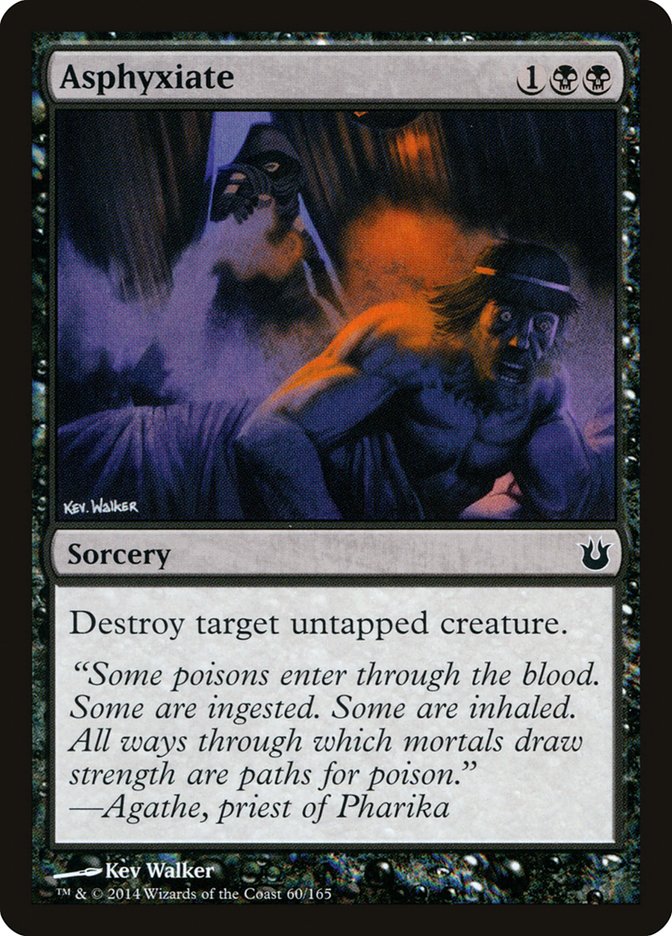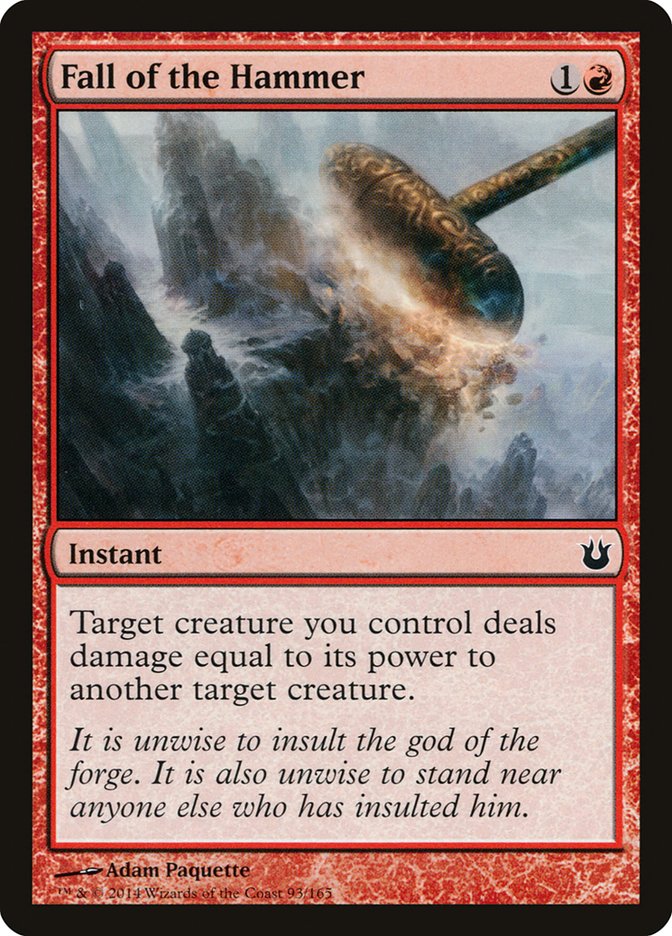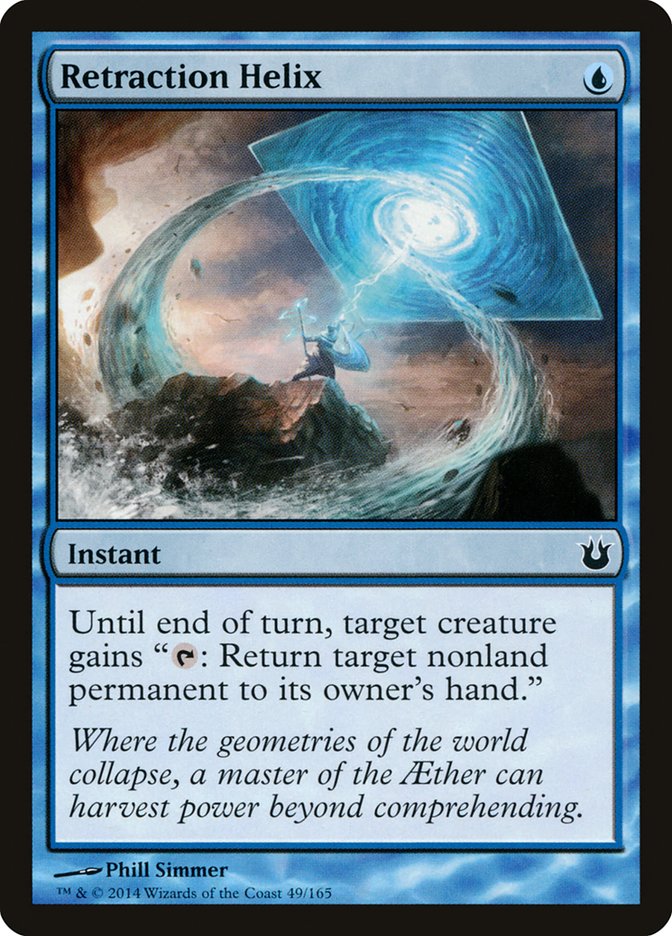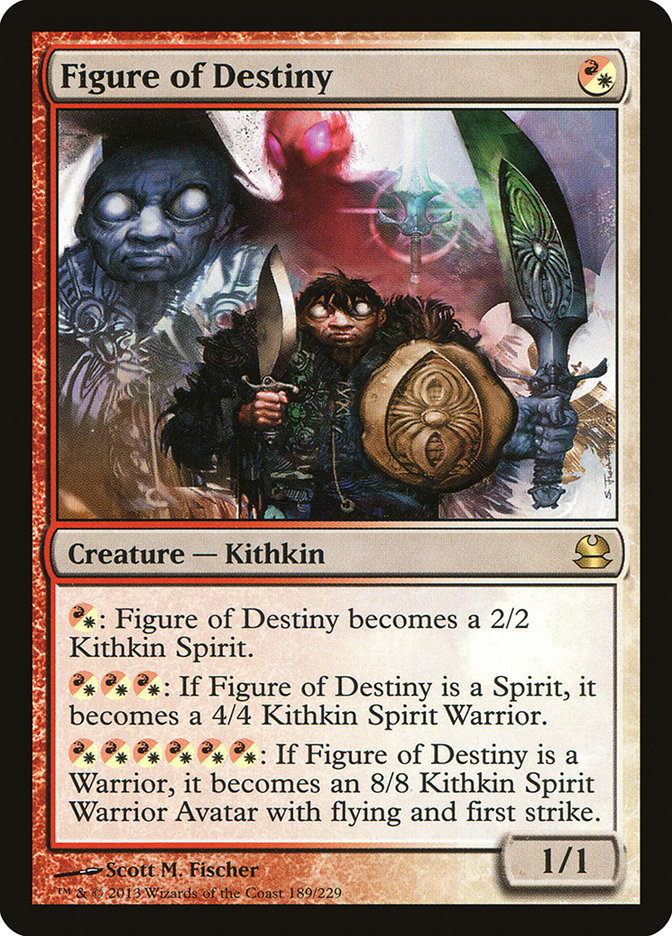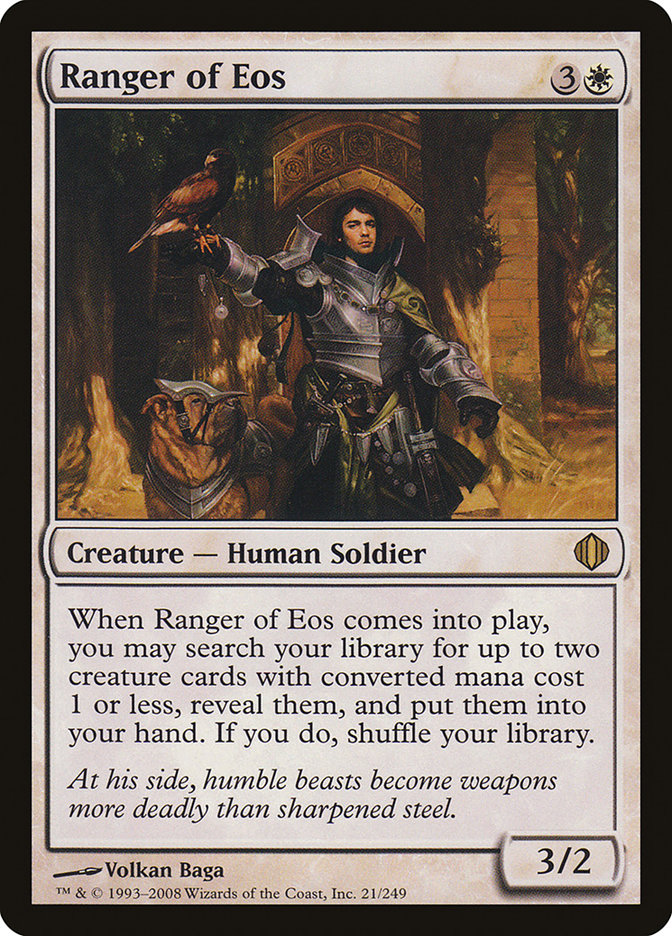Testing for Pro Tour Born of the Gods was unlike any testing I’d ever done for a Pro Tour before. I joined a team with a lot of strong Modern mages among some of the most talented players in North America. We spent a secluded week in Valencia before the tournament grinding Modern and drafting constantly in what ultimately culminated in one of my worst Pro Tour finishes. Today I’m going to go over what we did to prepare and try to find out exactly what went wrong for me and what went right for my teammates.
Learning Born Of The Gods Limited
Before heading to Valencia, I had multiple flights delayed or canceled due to snow, which was a pretty big blowout. Instead of getting down about it, I decided to just draft a bunch on Magic Online. By "a bunch," I mean a bunch for me, which was only about four or five drafts, but I felt like I learned a lot about the format in general and was able to translate that information into tangible results for a few of my teammates.
When I arrived at the apartment in Valencia, the group had already drafted a few times, and things were certainly starting to come together in terms of pick order, card playability, and shaping archetypes. As I began jumping in on drafts, I was able to put some of my newfound information to the test.
After a couple of 2-1 records, I also began to discover certain things other people had figured out that I wasn’t implementing yet. Both of my decks felt much worse than the ones I had on Magic Online (big shocker), but I also felt like I wasn’t necessarily reading the packs correctly. Finding out which colors are open and knowing when to switch colors is easily one of my biggest flaws as a Limited player.
While I tend to do okay in drafts at higher-level events, I’ve never gone 3-0 in a draft at a Pro Tour. This is not surprising, as I generally tend to play Constructed events and the Pro Tour is the only major event I’ve attended that mixes both Constructed and Limited. I also usually to skip flying to Limited Grand Prix for this reason, but it’s one aspect of my game that I’ve wholeheartedly recognized needs improvement and is something I intend to work on.
For this tournament, I felt more prepared for Limited than I ever have. After our first few initial drafts, we had a team meeting about Limited. In that meeting, we went over general card quality for every common and uncommon and discussed pick orders regarding archetype, power level, and color combination.
I felt like black was my forte, as no one other than Josh McClain had really drafted it much.
My biggest argument throughout the entire process was that black was actually a strong color to be in mostly because of the power level of it in the second and third pack. In my opinion, Asphyxiate is the best black common, and passing it could easily signal to the person on your left that black is open. Since black is probably the weakest color in Theros/Born of the Gods Draft, passing an Asphyxiate if you want to be in black is a no-no. You want to get all the good black cards in the first pack of Theros, and giving the person to your right mixed signals is a sure way to make sure they cut you off when they open Gray Merchant of Asphodel in pack 2.
The awkward part of this argument that I made to the rest of the team was that very few of them actually thought Asphyxiate was decent, let alone very good. If you compare Asphyxiate to other common removal spells throughout Magic’s history in black, it doesn’t look like a playable Magic card. It’s a situational removal spell that can end up being a relatively dead card because it doesn’t always kill exactly what you need it to.
My argument was that very few removal spells in the format kill the creatures that you "need" to kill and you’ll often have to trade Asphyxiate for a creature that isn’t necessarily their best one. This means that Asphyxiate is way more of a tempo play as opposed to an actual spot removal spell, but that isn’t much to ask of a three-mana spell.
After convincing a few people that Asphyxiate is actually good, I decided to watch Josh McClain (the other black drafter) in his next draft, talking about his picks and (hopefully) shaping his draft as it went along. Even though he took Akroan Skyguard as his first pick, he hesitantly took Asphyxiate second pick at my request and moved into black. He ended up with a very strong B/W deck and went 3-0 (to my delight).
This wasn’t hard to sell people on. Fall of the Hammer is widely regarded as the best common in the set and is better than most of the uncommons in every color. It’s removal at instant speed that can very easily kill your opponent’s biggest guy given a combat trick or bestow creature or just having a giant monster already in play.
At the beginning of our Draft discussions, Retraction Helix was considered a very strong card and easily a first pick if you wanted to play U/W Heroic. After playing a few drafts with the card, I can safely say that it’s fine but not even close to my radar for first pick. I made the argument that it’s far too situational, doesn’t actually kill creatures, and can lead to absurd blowouts from a cheap spot removal spell. The fact that you need a creature without summoning sickness and it can’t attack is pretty awkward.
It’s similar to Fall of the Hammer in a lot of ways, especially in a format where most goals include creating a Voltron of sorts, but it isn’t exactly phenomenal. I’ll play the card in most blue decks, but I’m not all that enthusiastic about it.
This is one of the best creatures that I originally thought was completely unplayable. It tends to go pretty late in drafts and definitely works better in pairs, so drafting a deck around this type of card is certainly fine.
With enough fliers and combat tricks to keep your ground guys alive, Loyal Pegasus actually ends up being the dark horse of the format for me. Late in the drafting process, I played against someone who just dismantled me with multiples of the card. Even though I felt like my slower green deck was very good, there was basically no way for me to ever beat an aggressive draw from his deck. Even after continuing to play fun games, I think I only won a single game out of six or seven.
Overall, I felt like I contributed a reasonable amount to our Limited discussions. That’s not something I could say about a lot of other Limited formats simply because I didn’t actually play them all that much. I know that I can be good at Limited, but the problem for me is actually putting in the hours. I find it difficult to do so when there are so few events that actually require me to play Limited, but it’s definitely something I’m going to focus on in the future.
I actually had an amazing talk with Dave Shiels at the end of the trip that really hit home and sparked something deep inside me that I felt like I had lost over the last few months.
"Todd, you’re not a strong intuitive player. You eventually gain intuition through playing a lot of games in a format. If you sit down across from someone and have played ten or twenty or even a hundred more games in a format than them, then you’re going to be at a significant advantage."
This is definitely something I already knew, but hearing someone else actually say it out loud got me thinking. Every time I’ve ever done well in a tournament, I didn’t switch to the "best deck" the night before. I put in the time and learned everything that could come up in the format and knew what to do in those situations. Lately I haven’t been doing that, and my results have been a clear example of not putting in the work.
Thinking Inside The Box
As far as Modern goes, we had a loose base to begin with, much like everyone else. Wild Nacatl seemed like a sweet starting point for any aggressive strategy, something that had been sorely lacking in Modern since it was banned a while ago. What to end up doing after that starting point was a mystery to me.
Bitterblossom sounded awesome because Faeries is one of my favorite decks, but like everyone else we figured out that Bitterblossom just isn’t a great card because of how powerful other strategies are now. Too many decks can just burn you out and invalidate your Bitterblossom. Too many people can overwhelm the traditionally powerful starts from Faeries. Too many people can just ignore Bitterblossom entirely.
The rest of the format stayed mostly the same, except that Deathrite Shaman left a big gap in the metagame. Without Deathrite Shaman, the incentives to play a midrange strategy virtually disappeared. This was my biggest pet peeve of the banned list changes because they took out midrange decks in order to make way for aggressive decks instead of just having both. What I didn’t realize is how few people would play Thoughtseize or Inquisition of Kozilek, which left a huge hole for people to play degenerate combo decks without much fear. The fact that I didn’t realize how big that hole would be makes me feel nauseous.
We began the week with a mock tournament. We all brought different decks with which to battle, and we recorded the results. The shocking part about this mock tournament to me was that no deck had a dominant win percentage. These initial results gave me a false impression about Modern, and that impression lingered throughout most of my testing process.
I say "my" testing process instead of "our" testing process because Modern is such a big format that it isn’t exactly feasible for every person on the team to play the same deck. You also have to recognize that not everyone on a team can play a combo deck, not everyone can play a control deck, and not everyone can play an aggro deck. This means that early on in testing you’re going to have people break off into groups and ultimately decide what they want to play based on their knowledge of the format and their preferences.
For some, that meant playing Birthing Pod. For others, Splinter Twin. I decided to play Zoo pretty early on. Though I had a few brews that I thought I could make work, we ended up focusing more on Limited than Modern, so I was left to my own devices to figure out exactly what list I wanted to play.
To give you a little backstory, I’ve been playing Wild Nacatl decks in Modern and Extended for a long time. Zoo has always been one of my favorite archetypes because I feel like I can gain a significant edge on my opponents based on how I build my deck and how I view each matchup going in. For example, when both Zoo decks are pretty even on removal and threats, being on the draw isn’t actually all that bad. It can end up in a war of attrition pretty easily. I actually chose to draw in one of my Zoo mirrors at the Pro Tour.
But what I missed was how much one small change to a deck or format can shift other perspectives immensely and how traditional knowledge with an archetype can actually be a hindrance instead of a boon. Since I used mostly traditional knowledge of Zoo matchups, I ended up building a Zoo list that was ultimately flawed, and it cost me the tournament. And since I figured that most Zoo matchups were pretty close, I assumed most of my matches would be decided on whether or not I drew well and less on whether or not I actually had the right answers for the deck I was facing.
I decided to hedge in a few matchups and build my deck to be strong against the mirror, Affinity, Splinter Twin, and U/W/R Control and mostly ignore the fringe strategies unless I could cause some splash damage with overlapping sideboard cards. Here’s the list I ended up registering for Pro Tour Born of the Gods.
Creatures (27)
- 4 Kird Ape
- 4 Tarmogoyf
- 1 Figure of Destiny
- 4 Wild Nacatl
- 4 Loam Lion
- 2 Flinthoof Boar
- 4 Experiment One
- 4 Ghor-Clan Rampager
Lands (20)
Spells (13)

First of all, there are a few nombos in the deck that are pretty obvious. The singleton Forest alongside Figure of Destiny is awkward at times, but there are a lot of situations where you need to fetch a basic Forest, such as in matchups where your life actually matters. This is one of the reasons why I built the mana base in this fashion. With six fetch lands that can get the Forest and six that can get the Mountain, I molded the shock lands around them and ultimately the spells too.
With a focus on green as the primary color, most of my games involved fetching Stomping Ground and Temple Garden. Since all of my one-drops want a Forest involved somehow, I put an emphasis on those two lands over Sacred Foundry even though Forest into Sacred Foundry pumps Wild Nacatl to the maximum.
The singleton Figure of Destiny was a concession to wanting to play Ranger of Eos in the sideboard, though it isn’t that bad as just a one-drop. When you have a curve that involves a Wild Nacatl into a Figure of Destiny and use the last mana to pump it to a 2/2, the only downside would be if you draw a third one-drop. In those scenarios, the triple one-drop draw is pretty ridiculous anyway as long as you can make all of your creatures attack for at least two damage on the next turn.
The problem with Figure of Destiny is that it is very mana intensive and often leads to Time Walks, but it was ultimately a stronger card in every matchup except the mirror, where I felt it was pretty useless. The fact that it’s just another creature to kill in the mirror means it isn’t all that exciting to get with Ranger of Eos.
The problem with Ranger of Eos is that it’s only good in this version of Zoo if your opponent is playing Path to Exile. Assuming they don’t draw it, Ranger of Eos can get stuck in your hand quite often because you’re only playing twenty lands. The fact that raw card advantage isn’t always the most important thing in the mirror can be an issue too since there are a few creatures that invalidate most of your threats. Tarmogoyf is the prime example, as having Ranger of Eos and a few Wild Nacatl isn’t always going to win you the game if you have to lose a creature for free in every combat step.
The lack of Lightning Helix in the deck is also awkward in the mirror at times since some versions of Zoo can go way under other versions. Cards like Burning-Tree Emissary and Tribal Flames make card advantage irrelevant because they can just overwhelm you before you even get started. What I did find in testing is that having the right answer is almost always as important as having the right threat, which means cards like Path to Exile and Chained to the Rocks can be absurd when fighting a Tarmogoyf battle while a slew of Lightning Helix will only buy you a small amount of time before they take over the game with their superior threats.
Another way to build Zoo is to go a bit bigger. If you do that, cards like Ghor-Clan Rampager are much worse, but it gives you something to do in the late game if you happen to draw more than three lands. This involves things like Noble Hierarch, Knight of the Reliquary, and some potential top-end spell like Thundermaw Hellkite. I’m not sure if these versions of Zoo are actually viable since they are generally too slow to handle real combo decks, but they are much stronger in the fair matchups assuming your draw is reasonable.
I tried to go "in between" with my Zoo list so that I could have a powerful clock against combo while also having enough spells that could be useful in the mid or late game. This is one of the reasons why I really like Ghor-Clan Rampager in this deck, as I get to cast him a fair amount (depending on the matchup).
The biggest problem with smaller Zoo decks is that they all need two lands to function properly but can rarely afford to get flooded. I lost almost every single game where I drew five or more lands, but I also lost nearly every game where I only drew one. Building a Zoo deck that has enough lands to hit two in the early game but also mitigate flooding by playing fewer lands is virtually impossible.
Early in testing, I saw Mutagenic Growth as a powerful protective option that could also be a solid boost of tempo in any creature battle. As a natural counter to Lightning Bolt for zero mana, it helps you progress your board in the early game while still having additional uses. Once I saw that Mutagenic Growth was catching in popularity on Magic Online and performing well, I knew the card was real. Even in the Pro Tour, the games I won were mostly the ones where I drew Mutagenic Growth, as it almost always bought me an entire turn for zero mana.
What I Learned From Testing With A Team
What I learned from the talented group of Magicians I worked with is that I’m not nearly as good or as smart as I sometimes tend to believe. However, I also learned that my ideas are not always good or bad just because other people think they are good or bad. When you’re working in a vacuum, your views can be skewed slightly based on the perception of the group, even if your original views were actually correct.
I thought I knew a lot about Modern before the tournament started, but a lot of the things I knew were based on bad information from playing previous iterations of decks or against previous iterations, which ultimately resulted in my failure. I did not contribute as much to the team as I would have liked, but that is also because of my own shortcomings.
At various points in the testing process, I felt like many of my ideas were disregarded even though I made valid arguments. At one point I even gave up on trying to convince people of ideas I thought were important, and that is almost entirely due to my pride. You can only argue with a brick wall for so long before you give up and go find a ladder to climb over it, but I should have tried to find a sledgehammer to smash through it. If I had, maybe someone on our team other than Jacob Wilson could have broken into the Top 8.
Overall, it was a delight to test with a big team for a Pro Tour. I felt like everyone on our team was dedicated to helping each other do well, and I’m just disappointed in the fact that I didn’t try harder. One of my biggest flaws as a player and as a human being is that I give up easily, and that’s something you just can’t do when other people are relying on you.

